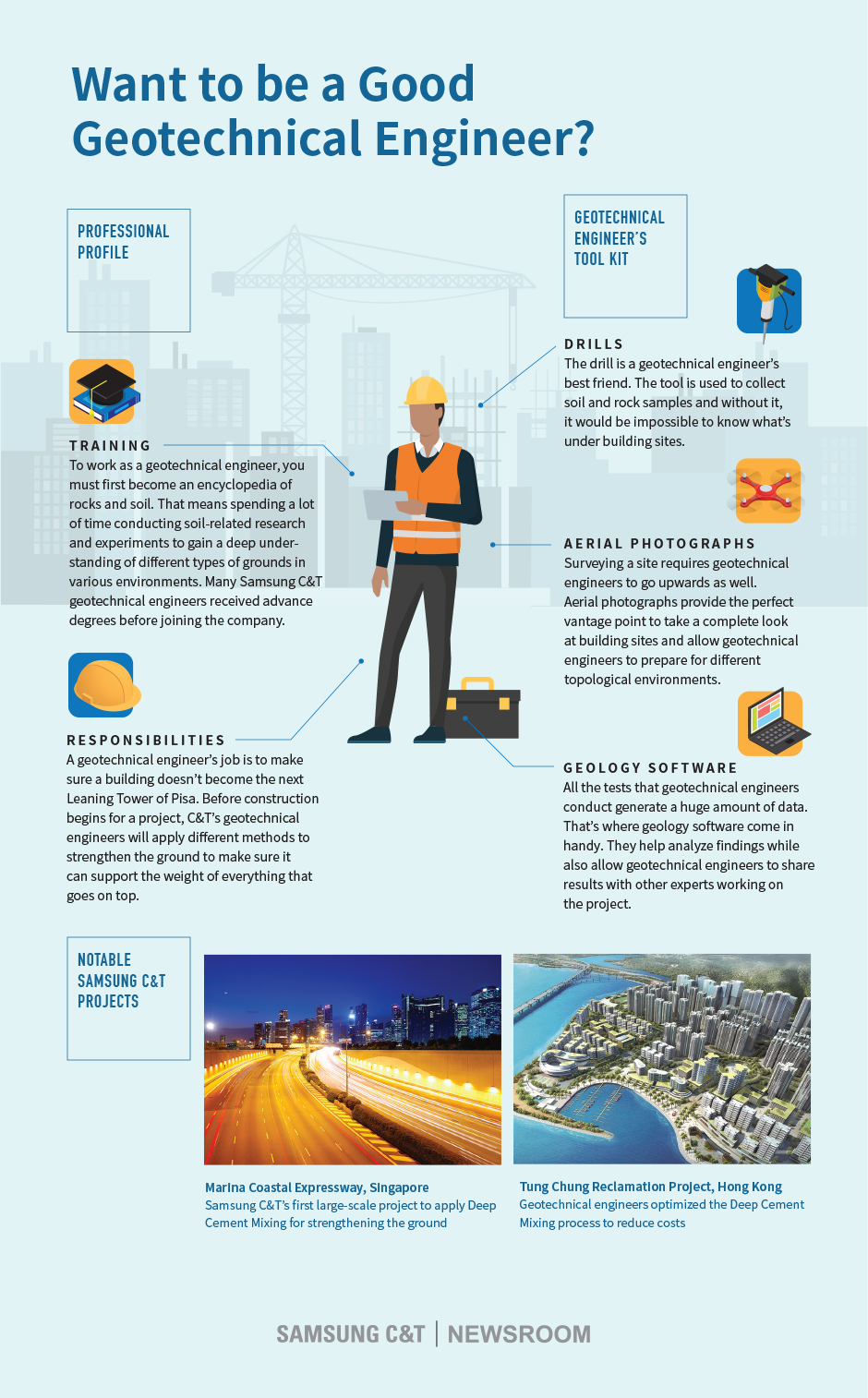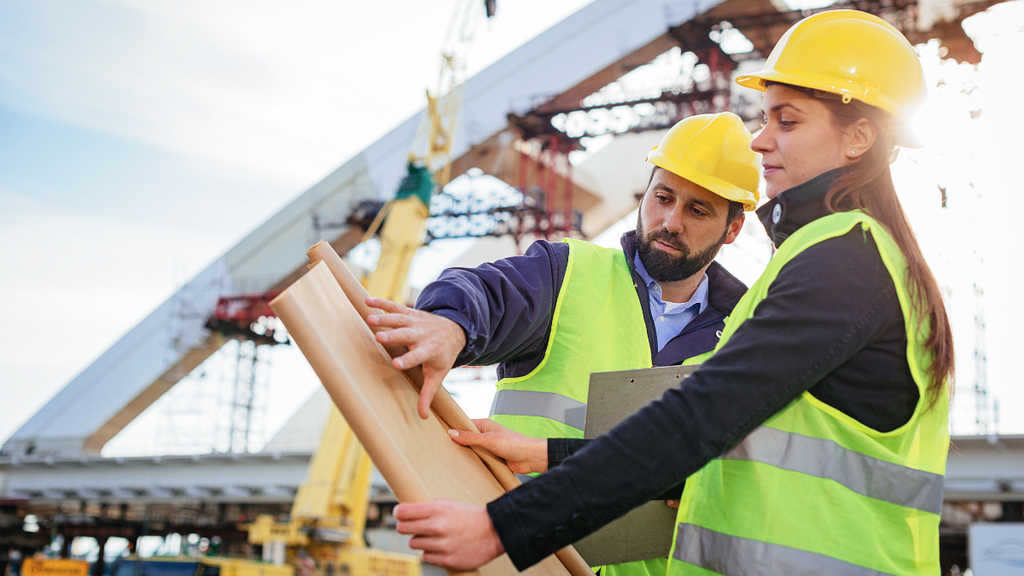Not known Factual Statements About Geotheta
Not known Factual Statements About Geotheta
Blog Article
Geotheta for Dummies
Table of ContentsGeotheta Can Be Fun For EveryoneSome Known Questions About Geotheta.The 8-Minute Rule for GeothetaSome Ideas on Geotheta You Should KnowGeotheta Can Be Fun For Anyone

They carry out site investigations, collect examples, do research laboratory examinations, and evaluate data to review the suitability of the ground for construction projects - Engineer of Record. Based on their searchings for, geotechnical designers give recommendations for structure style, incline stability, preserving frameworks, and mitigation of geotechnical dangers. They collaborate with other experts, such as designers, structural engineers, and construction groups, to guarantee that geotechnical factors to consider are integrated right into the total job design and application
By evaluating the behavior and properties of dirt and rock, they can recognize potential geotechnical hazards such as landslides, soil settlement, or slope instability. Their proficiency assists stop failings or accidents that can endanger lives and property. Below are some detailed responsibilities and obligations of a geotechnical designer: Website Investigation: Geotechnical engineers conduct website examinations to gather data on subsurface conditions.
They interpret the data to recognize the residential properties and habits of the dirt and rock, including their strength, permeability, compaction attributes, and groundwater problems. Geotechnical Evaluation and Design: Geotechnical designers evaluate the data collected during site examinations to evaluate the security and suitability of the site for building projects. They do geotechnical estimations and modeling to assess variables such as birthing capability, negotiation, incline stability, side earth stress, and groundwater circulation.
A Biased View of Geotheta
Structure Style: Geotechnical engineers play a vital role in making foundations that can safely support the designated structure. They analyze the dirt problems and load requirements to determine the proper structure type, such as superficial foundations (e.g., footings), deep foundations (e.g (https://geotheta.weebly.com/)., heaps), or specialized techniques like dirt enhancement. They consider elements such as negotiation limits, birthing capacity, and soil-structure communication to develop optimum foundation styles
They review building strategies, screen site tasks, and conduct field evaluations to verify that the design suggestions are adhered to. If unpredicted geotechnical problems develop, they evaluate the circumstance and offer referrals for remediation or modifications to the layout. Threat Analysis and Mitigation: Geotechnical engineers examine geotechnical threats and threats related to the project website, such as landslides, liquefaction, or dirt disintegration.

Cooperation and Communication: Geotechnical designers function closely with various other experts associated with a task, such as architects, architectural engineers, and building and construction groups. Efficient communication and collaboration are vital to incorporate geotechnical factors to consider right into the overall task design and building process. Geotechnical engineers give technical competence, response queries, and make sure that geotechnical requirements are fulfilled.
The 10-Second Trick For Geotheta
Here are some kinds of geotechnical engineers: Structure Engineer: Structure engineers focus on designing and analyzing foundations for structures. They analyze the soil problems, lots requirements, and website features to identify the most ideal structure kind and layout, such as shallow structures, deep structures, or specialized methods like pile structures.
They evaluate the aspects influencing slope stability, such as soil homes, groundwater problems, and slope geometry, and develop methods to avoid slope failings and mitigate threats. Quake Designer: Quake engineers focus on analyzing and developing structures to endure seismic forces. They examine the seismic danger of a website, evaluate dirt liquefaction capacity, and develop seismic design criteria to make sure the safety and security and durability of structures during earthquakes.
They perform area testing, collect samples, and analyze the collected data to identify the dirt properties, geologic developments, and groundwater conditions at a site. Geotechnical Instrumentation Engineer: Geotechnical instrumentation designers concentrate on monitoring and measuring the actions of soil, rock, and frameworks. They set up and maintain instrumentation systems that monitor variables such as dirt settlement, groundwater degrees, incline motions, and structural displacements to analyze efficiency and offer early cautions of prospective problems.
Geotheta Can Be Fun For Anyone
They perform tests such as triaxial tests, debt consolidation tests, straight shear examinations, and permeability examinations to gather data for geotechnical analysis and layout. Geosynthetics Designer: Geosynthetics engineers focus on the design and application of geosynthetic materials, such as geotextiles, geogrids, and geomembranes. They utilize these products to enhance dirt security, enhance slopes, provide water drainage solutions, and control erosion.
They tend to be investigative read more people, which means they're intellectual, introspective, and inquisitive. They wonder, systematic, logical, logical, and sensible. Several of them are also social, indicating they're kind, generous, cooperative, person, caring, helpful, compassionate, sensible, and pleasant. Does this sound like you? Take our cost-free career examination to figure out if geotechnical designer is one of your top profession matches.
In the workplace environment, geotechnical designers make use of specialized software tools to carry out calculations, create designs, and assess data. They prepare reports, testimonial project requirements, interact with customers and staff member, and coordinate project tasks. The workplace setting supplies a conducive setting for research, analysis, and cooperation with other professionals associated with the task.
More About Geotheta
They regularly go to job websites to perform site examinations, assess geotechnical problems, and collect data for analysis. These check outs entail traveling to various areas, sometimes in remote or challenging terrains. Geotechnical designers might do dirt tasting, conduct tests, and monitor construction activities to ensure that the geotechnical elements of the project are being executed properly.
Geotechnical designers likewise work in specialized geotechnical research laboratories. Geotechnical research laboratory engineers work extensively in these environments, dealing with screening devices, operating tools, and recording data.
Report this page